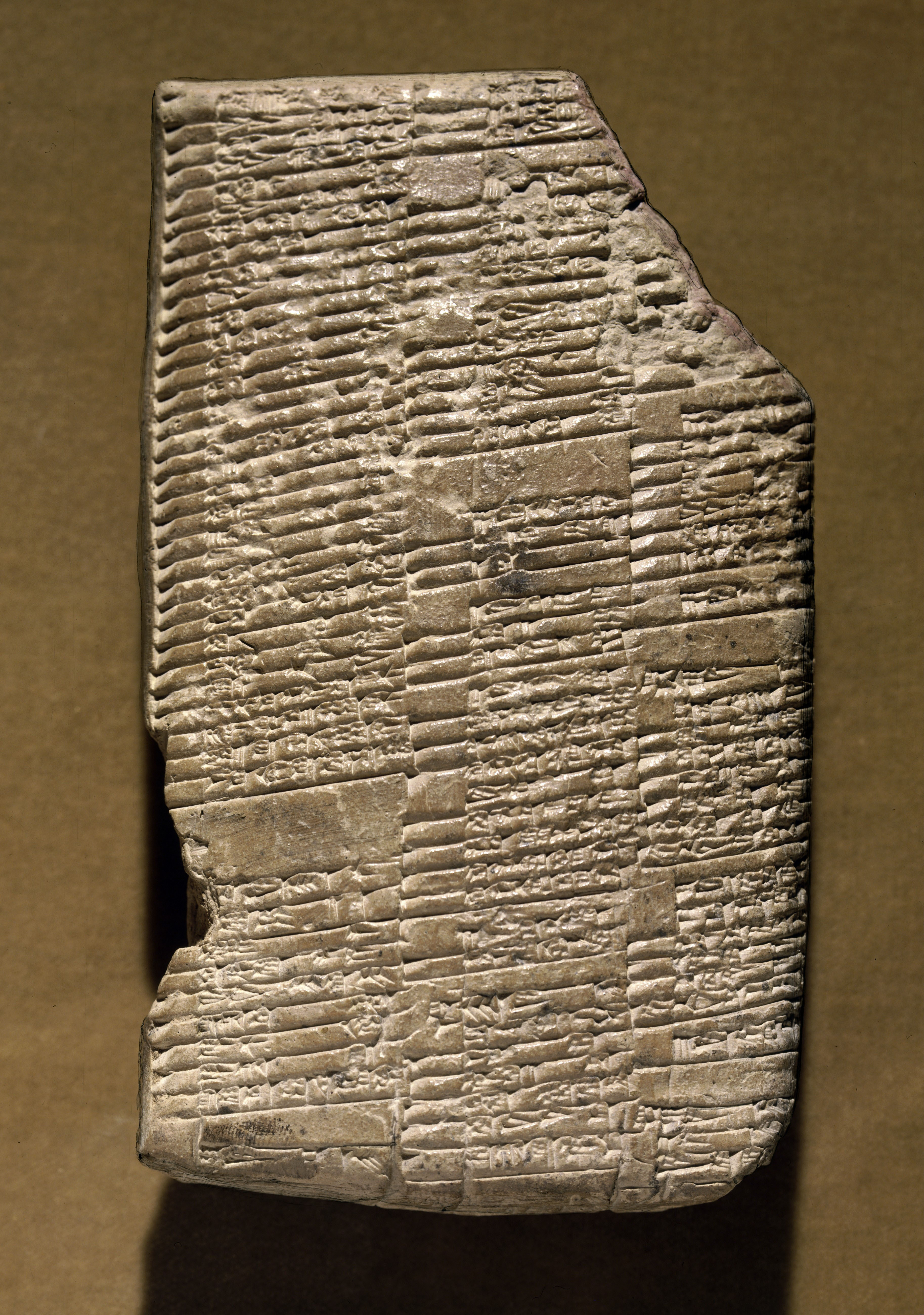Cuneiform, << kyoo NEE uh fawrm, >> was a system of writing used by the people of ancient Middle Eastern civilizations. It became widespread long before the development of modern alphabets. The word cuneiform comes from the Latin word cuneus, meaning wedge. Cuneiform characters are made up of small wedges, each of which is broad at one end and pointed at the other. Most cuneiform writings were inscribed on rectangular clay tablets. The characters were made with a wedge-shaped tool called a stylus, while the clay was still wet. The tablets were then dried in the sun. The characters also were inscribed in metal and stone.

Scholars have had difficulty translating cuneiform writing because many of the characters represent either words or syllables. In addition, many ancient peoples developed their own interpretations of cuneiform symbols, and so one character may have several meanings.
Cuneiform was probably developed by the Sumerian people as a shortened form of picture writing. The earliest known cuneiform inscriptions were found in the lower Tigris-Euphrates Valley in what is now southeastern Iraq. They date from about 3300 B.C. The most recent cuneiform clay tablet was written about A.D. 75, near the beginning of the Christian Era.
Sumerian cuneiform symbols are more complex than those of other peoples. The Sumerians and Babylonians used about 600 characters, which ranged from a single wedge to complicated signs consisting of 30 or more wedges. The Hittites used about 350 characters, the Elamites about 200, and the Persians only 39.

Scholars first attempted to translate cuneiform writing in the late 1700’s. At that time, European travelers became interested in a cuneiform inscription discovered in western Iran. This inscription was written in three languages—Persian, Babylonian, and Elamite—and measured about 300 feet (91 meters) long. It was carved in a cliff called Behistun Rock. During the mid-1800’s, Sir Henry Rawlinson, an English diplomat, first translated the Persian portion and later the Babylonian portion. The text described the accomplishments of the Persian king Darius I in the late 500’s B.C. The Elamite section was translated much later. The translations helped scholars decipher other cuneiform inscriptions.
Since 1800, several hundred thousand cuneiform clay tablets and stone inscriptions have been discovered. These inscriptions, on exhibit in museums throughout the world, help scholars broaden their knowledge about early human history.
